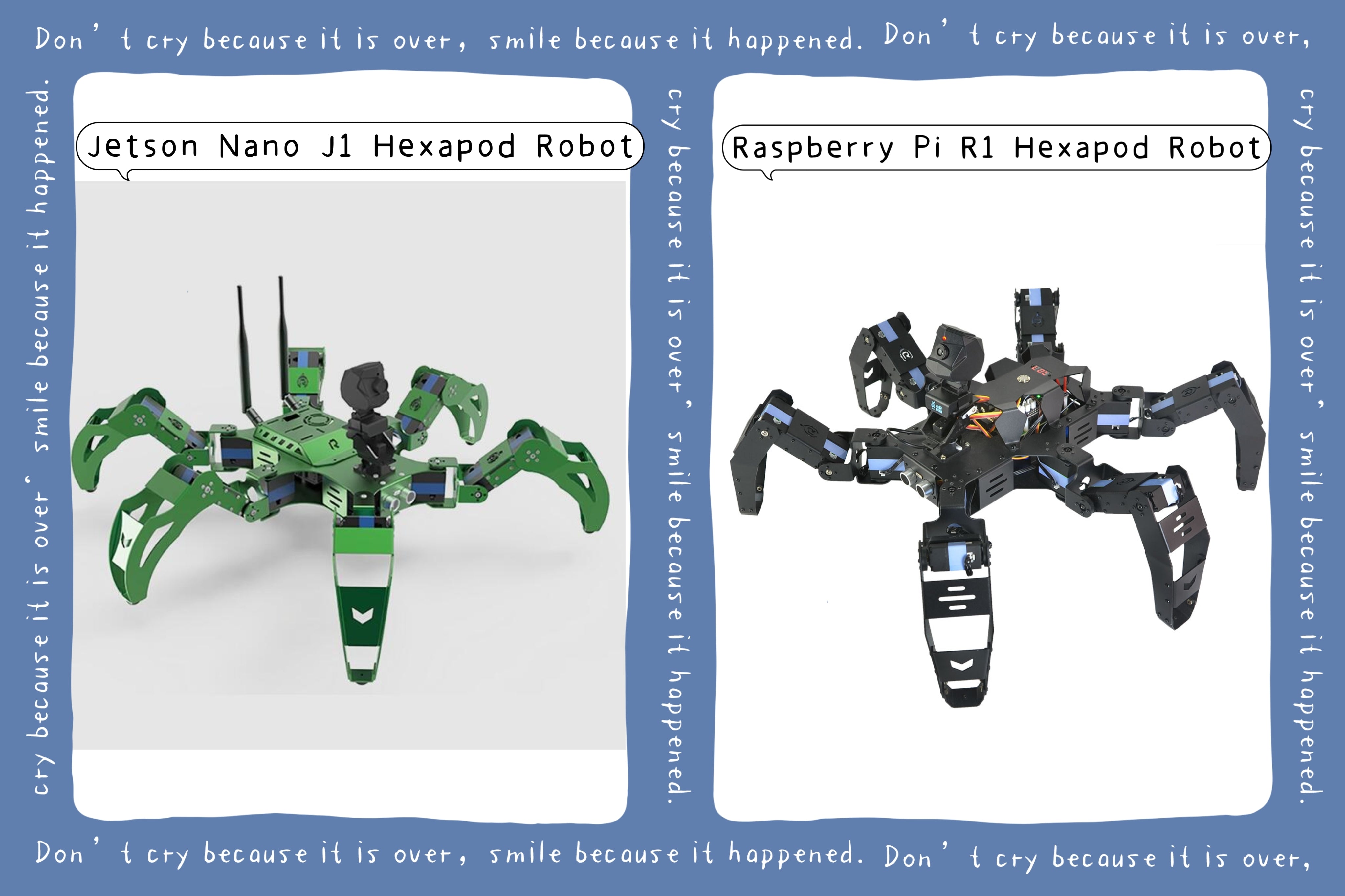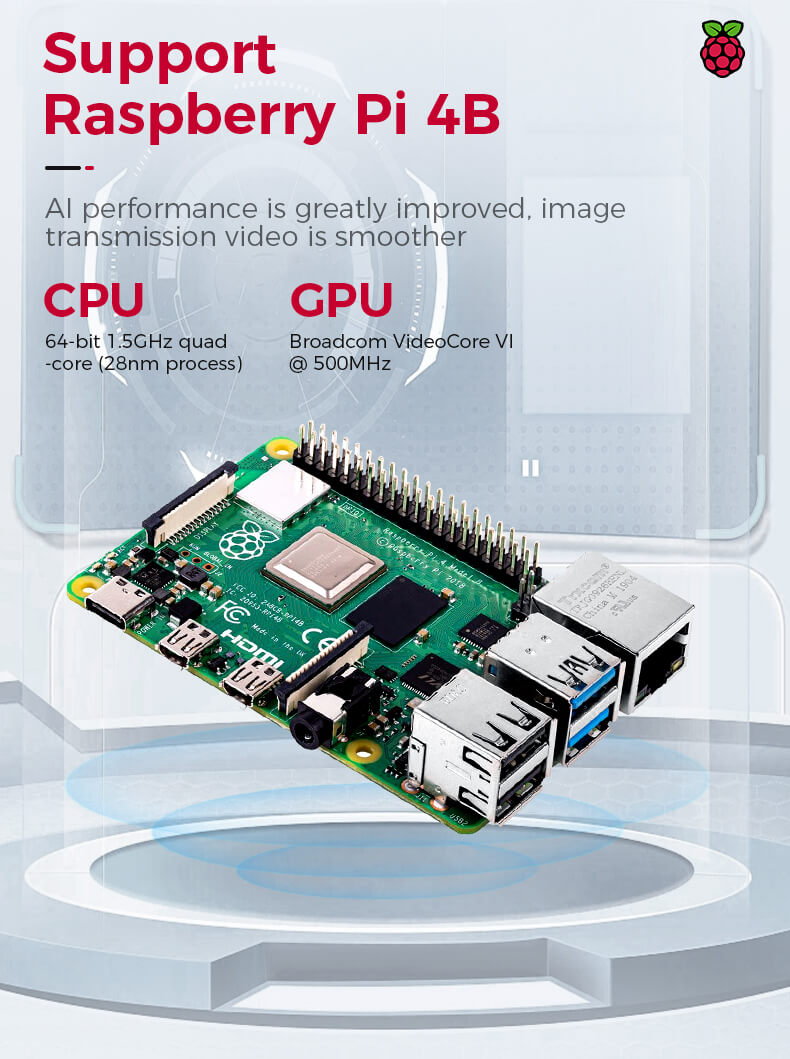News

Raspberry Pi Bionic Hexapod and Jetson Nano Hexapod: Technical Differences and Application Considerations
Raspberry Pi Bionic R1 Hexapod Robot
Raspberry Pi Bionic Hexapod is suitable for application scenarios that have high requirements for real-time and stability, but low requirements for AI functions. For example, tasks such as environmental monitoring and terrain exploration can be achieved with Raspberry Pi Bionic Hexapod.
Jetson Nano Bionic J1 Hexapod Robot
Jetson Nano Hexapod is more suitable for application scenarios that require high-performance computing and AI functions. For example, in tasks such as autonomous navigation, obstacle detection, and target recognition, Jetson Nano Hexapod can exert its powerful AI computing capabilities to achieve a higher level of intelligence.
Raspberry Pi Bionic Hexapod is suitable for application scenarios that have high requirements for real-time and stability, but low requirements for AI functions. For example, tasks such as environmental monitoring and terrain exploration can be achieved with Raspberry Pi Bionic Hexapod.
Jetson Nano Bionic J1 Hexapod Robot
Jetson Nano Hexapod is more suitable for application scenarios that require high-performance computing and AI functions. For example, in tasks such as autonomous navigation, obstacle detection, and target recognition, Jetson Nano Hexapod can exert its powerful AI computing capabilities to achieve a higher level of intelligence.

ESP32 hexapod bionic robot and Raspberry Pi hexapod bionic robot: differences and comparison
ESP32 and Raspberry Pi are two different microcontrollers, each with different characteristics and advantages on the hardware platform. ESP32 is a low-power microcontroller with integrated Wi-Fi and Bluetooth functions, with a dual-core processor and rich peripheral interfaces, suitable for the Internet of Things, smart home, industrial control and other fields. Raspberry Pi is a microcomputer motherboard based on ARM architecture, with powerful computing power and rich expansion interfaces, often used in education, scientific research, development and other fields.

Raspberry Pi robot recommendation for learning
The Raspberry Pi programming robot has become an important tool in the field of robotics due to its versatility, strong scalability and flexible programming. By programming robots with Raspberry Pi, we can realize various complex movements and interactive functions, bringing unlimited possibilities to fields such as education, scientific research, and entertainment. With the continuous advancement of technology and the continuous expansion of application scenarios, I believe that Raspberry Pi programming robots will play a more important role in the future.

How to use raspberry Pi to bulid raspberry Pi hexapod robot for students
Building a Raspberry Pi Hexapod robot is a captivating and educational project that can inspire students to explore the exciting field of robotics. By combining the Raspberry Pi's computing power with the versatility of servo motors, students can bring this six-legged marvel to life, learning valuable skills in electronics, programming, and mechanical design along the way. Through this hands-on experience, students can develop a deeper understanding of technology, problem-solving, and the joy of creating something remarkable.
